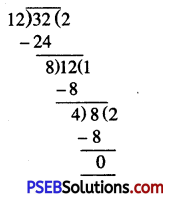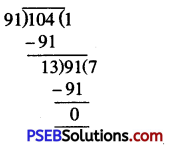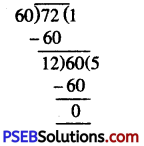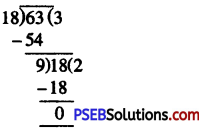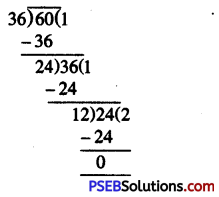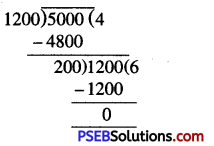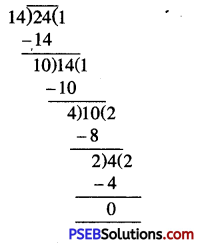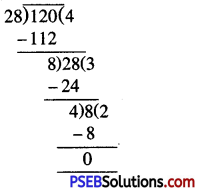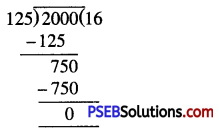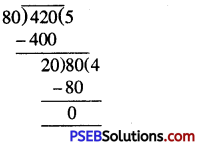Punjab State Board PSEB 6th Class Hindi Book Solutions Chapter 8 पेड़ की कहानी Textbook Exercise Questions and Answers.
PSEB Solutions for Class 6 Hindi Chapter 8 पेड़ की कहानी
Hindi Guide for Class 6 पेड़ की कहानी Textbook Questions and Answers
भाषा-बोध (प्रश्न)
1. शब्दों के अर्थ ऊपर दिए जा चुके हैं।
मिथ्या-कथन = झूठ बोलना,
हलाहल = एक प्रकार का विष,
निवारण = दूर करना,
निरंतर = लगातार
द्वेष = वैर भाव
बखान = कहना
ज्योति = रोशनी, प्रकाश
तृप्त करना = संतुष्ट करना,
अनुकरण = अनुसार कार्य करना,
पतझड़ = जिस ऋतु में पत्ते झड़ जाते हैं।
औषधि = दवाई
सर्वत्र = सब जगह
आत्मकथा = अपनी कहानी
2. वाक्यों में प्रयोग करो
प्रकृति = …………………..
प्राणवायु = ……………….
झुण्ड = ………………..
पंक्तियों = ……………….
प्रहार = …………………..
उत्तर:
प्रकृति = प्रकृति परिवर्तनशील है।
प्राणवायु = वृक्ष हमें प्राणवायु प्रदान करते हैं।
झुण्ड = पशुओं का झुण्ड सारी फसल नष्ट कर गया।
पंक्तियों = सभी छात्र पंक्तियों में खड़े थे।
प्रहार = निःशस्त्र पर प्रहार करना उचित नहीं।
![]()
3. मुहावरों तथा लोकोक्तियों का वाक्यों में इस प्रकार प्रयोग करें कि अर्थ स्पष्ट हो जाए
आँखों का तारा = ………………………..
चोली-दामन का साथ = …………………..
डींग हाँकना = ……………………..
अपने मुँह मियाँ मिट्ट बनना = …………………..
उत्तर:
आँखों का तारा = मोहन अपने माता-पिता की आँखों का तारा है।
चोली-दामन का साथ = प्रीतम और सुरेन्द्र का चोली-दामन का साथ है।
डींग हाँकना = डींग हाँकने वाला व्यक्ति अपमानित होता है।
अपने मुँह मियाँ मिट्ट बनना = मूर्ख व्यक्ति ही अपने मुँह मियाँ मिट्ट बनते हैं, सज्जन कभी स्वयं अपनी प्रशंसा नहीं करते।
4. शुद्ध रूप लिखो
1. तिपत = ………………….
2. दवेष = ……………………
3. जयोति = …………………
4. नीवारण = …………………….
5. आकसीजन = ……………….
6. आशरय = ………………….
7. प्राणीयों = ……………….
8. सवादिष्ट = …………………..
9. जामून = ………………….
10. खीड़कियाँ = ……………………
उत्तर:
अशुद्ध रूप – शुद्ध रूप
1. तिपत = तृप्त
2. दवेष = द्वेष
3. जयोति = ज्योति
4. नीवारण = निवारण
5. आकसीजन = ऑक्सीजन
6. आशरय = आश्रय
7. प्राणीयों = प्राणियों
8. सवादिष्ट = स्वादिष्ट
9. जामून = जामुन
10. खीडकियाँ = खिड़कियाँ
5. समानार्थक लिखिए
1. ज्योति = …………………..
2. हलाहल = ………………..
3. निवारण = ………………….
4. मज़बूती = ………………….
5. परिचित = …………………..
6. विशाल = …………………..
7. नीरस = ……………….
8. असंख्य = ……………………
9. उपजाऊ = ………………….
10. मूछित = …………………….
उत्तर:
1. ज्योति – प्रकाश
2. हलाहल – विष
3. निवारण – हटाना
4. मज़बूती – दृढ़ता
5. परिचित – जाना-पहचाना
6. विशाल – बड़ा
7. नीरस – रसहीन
8. असंख्य – अनगिनतं
9. उपजाऊ- उर्वर
10. मूछित – बेहोश
6. निम्न वाक्यों में संज्ञा शब्द छाँटकर लिखो और बताओ कि यह किस प्रकार की संज्ञा है ?
प्रश्न 1.
मैं नन्हें से बीज के रूप में धरती के गर्भ में छिपा रहता हूँ।
उत्तर:
बीज-(जातिवाचक संज्ञा), धरती-(व्यक्तिवाचक संज्ञा)
प्रश्न 2.
मैं विशाल वृक्ष का रूप धारण कर लेता हूँ।
उत्तर:
वृक्ष-(जातिवाचक संज्ञा)
प्रश्न 3.
नगर के बाज़ार में आप फल देखते हैं।
उत्तर:
नगर-(जातिवाचक संज्ञा), बाज़ार (जातिवाचक संज्ञा), फल (जातिवाचक संज्ञा)
प्रश्न 4.
पीपल, नीम, वट, चीड़ आदि मेरे असंख्य भाई हैं।
उत्तर:
पीपल, नीम, वट, चीड़ (व्यक्तिवाचक संज्ञा), भाई (जातिवाचक संज्ञा)
प्रश्न 5.
वेद, पुराण मेरी महिमा गाते हैं।
उत्तर:
वेद, पुराण-(जातिवाचक संज्ञा)।
![]()
7. विपरीत शब्द लिखो
1. जीव = ………………….
2. रस = ………………….
3. निर्माण = ………………….
4. नगर = ………………….
5. विशाल = ………………….
6. भूमि = ………………….
7. हलाहल = ………………….
8. पतझड़ = ………………….
उत्तर:
1. जीव = अजीव
2. रस = नीरस
3. निर्माण = ध्वंस
4. नगर = ग्राम
5. विशाल = लघु
6. भूमि = आकाश
7. हलाहल = अमृत
8. पतझड़ = वसन्त
8. वाक्यांशों के लिए एक शब्द लिखो
अपना स्वयं लिखा हुआ जीवन चरित्र, फल खाने वाला, जीवन देने वाला, सब में रहने वाला।
उत्तर:
1. अपना स्वयं लिखा हुआ जीवन चरित्र ………….. आत्मकथा।
2. फल खाने वाला ………….. फलाहारी।
3. जीवन देने वाला ………….. जीवनदाता।
4. सब में रहने वाला ………….. सर्वव्यापी।
9. भाववाचक संज्ञा व सर्वनाम छाँटो
(1) ‘वृक्ष’ सचमुच मेरा नाम आपको सुहावना लगता है।
(2) लक्ष्मण के मूच्छित होने पर मैंने ही उनके प्राण बचाये थे।
(3) बुराई का बदला भलाई से देना मेरे जीवन का लक्ष्य है।
(4) हरियाली मेरी आँखों को ज्योति देती हैं और मन को प्रसन्नता।
उत्तर:
(1) मेरा, आपको (सर्वनाम) सुहावना (भाववाचक संज्ञा)
(2) मैंने, उनके (सर्वनाम) मूछित (भाववाचक संज्ञा)
(3) मेरे (सर्वनाम) बुराई, भलाई (भाववाचक संज्ञा)
(4) मेरी, (सर्वनाम) हरियाली, प्रसन्नता (भाववाचक संज्ञा)
विचार-बोध (प्रश्न)
(क) निम्नलिखित प्रश्नों के उत्तर दीजिए-
प्रश्न 1.
पेड़ किस रूप में धरती में छिपा रहता है ?
उत्तर:
पेड़ नन्हें से बीज के रूप में धरती में छिपा रहता है।
प्रश्न 2.
पेड़ कैसे पनपता है ?
उत्तर:
पेड़, जल, लवण, रसायन आदि का भोजन पाकर पनपता है।
प्रश्न 3.
पेड़ किसके जीवन का आधार बनते हैं ?
उत्तर:
पेड़ सभी प्राणियों के जीवन का आधार बनते हैं।
प्रश्न 4.
पेड़ का स्वभाव प्राणी जगत् से किस प्रकार मिलता-जुलता है ?
उत्तर:
पेड़ का जीवन भी प्राणी जगत् की तरह सजीव है। वह भी साँस लेता है। खिलता-मुरझाता है। उस पर भी प्रकृति का प्रभाव पड़ता है।
प्रश्न 5.
पेड़ के अंग कौन-कौन से हैं ?
उत्तर:
जड़, पत्ते, तना, फल, फूल, लकड़ी ये सब पेड़ के अंग हैं।
प्रश्न 6.
प्राणी जगत् का जीवनदाता कौन है ?
उत्तर:
प्राणी जगत् का जीवनदाता पेड़ है।
प्रश्न 7.
वायुमण्डल में कौन-कौन सी गैसें मिली होती हैं ?
उत्तर:
वायुमण्डल में ऑक्सीजन, कार्बन डाइऑक्साइड गैसें मिली होती हैं।
![]()
प्रश्न 8.
पेड़ के पत्ते हवा में क्या छोड़ते हैं ?
उत्तर:
पेड़ के पत्ते हवा में प्राण वायु (ऑक्सीजन) छोड़ते हैं।
प्रश्न 9.
वर्षा का जल किस प्रकार उपयोगी होता है ?
उत्तर:
पेड़ों के पत्ते हवा में वाष्प-कण छोड़ते हैं, जो हवा को ठण्डा करते हैं। हवा वर्षा लाने में सहायक होती है। वर्षा के जल से प्राणियों को जीवन मिलता है।
प्रश्न 10.
लक्ष्मण को प्राण दान कैसे मिला था ?
उत्तर:
लक्ष्मण को संजीवनी बूटी द्वारा प्राण-दान मिला था।
प्रश्न 11.
कुनीन किस प्रकार प्राप्त होती है ?
उत्तर:
कुनीन सिनकोना नामक एक वृक्ष से प्राप्त होती है। यह भयंकर रोगों से जीवन की रक्षा करती है।
(ख)
प्रश्न 1.
पेड़ किस प्रकार शिव का अनुसरण करते हैं ?
उत्तर:
जिस प्रकार भगवान शिव ने विश्व के कल्याण के लिए समुद्र मंथन से निकले भयंकर हलाहल को स्वयं पी लिया था इसी प्रकार पेड़ भी विश्व के कल्याण के लिए भयंकर दूषित वायु को स्वयं ग्रहण कर हमें स्वच्छ जीवनदायी वायु प्रदान करके हमारा भला करते हैं।
प्रश्न 2.
पेड़ हमें परोपकार का पाठ कैसे पढ़ाते हैं ?
उत्तर:
पेड़ सदा परोपकार ही करते हैं। अगर कोई लकड़हारा अपनी कुल्हाड़ी से उन्हें काटता है तो भी यह उसे लकड़ियाँ प्रदान कर उसके परिवार का पालन-पोषण करते हैं। इसी प्रकार बच्चे उन्हें पत्थर मारते हैं तो उन पर भी उपकार करते हैं और बदले में यह उन्हें मीठे-मीठे फल प्रदान करते हैं। पेड़ अपने फूलों की सुगन्ध से सारा वातावरण महकाते हैं। यह हर कदम पर हमें परोपकार का पाठ पढ़ाते हैं।
आत्म-बोध
(1) अपने घर आँगन को पेड़-पौधों से सजाओ।
(2) एक गमले में तुलसी का पौधा लगाओ और उसकी देखभाल करो।
(3) पेड़ों के समान परोपकारी बनो।
(4) पेड़ों के समान गुणकारी बनो।
उत्तर:
विद्यार्थी उपर्युक्त कार्यों के लिए स्वयं प्रयास करें।
बहुवैकल्पिक प्रश्न
प्रश्न 1.
पेड़ की कहानी किस विधा की रचना है ?
(क) आत्मकथा
(ख) आत्म कहानी
(ग) आत्म रचना
(घ) जीवनी
उत्तर:
(क) आत्मकथा
प्रश्न 2.
वृक्ष प्राणी मात्र को क्या देते हैं ?
(क) फल
(ख) छाया
(ग) जीवन
(घ) पानी
उत्तर:
(ग) जीवन
प्रश्न 3.
वृक्ष प्राणियों के जीवन हेतु कौन-सी गैस छोड़ते हैं ?
(क) आक्सीजन
(ख) कार्बनडाईआक्साइड
(ग) बोनासाइड
(घ) क्लोरो-फ्लोरो
उत्तर:
(क) आक्सीजन
प्रश्न 4.
पेड़ किस रूप में धरती में छिपा रहता है ?
(क) नन्हें
(ख) मुन्ने
(ग) बीज
(घ) जड़
उत्तर:
(ग) बीज
प्रश्न 5.
लक्ष्मण को प्राण दान किससे मिला?
(क) संजीवनी बूटी से
(ख) वूटी से
(ग) घूटी से
(घ) घुट्टी से
उत्तर:
(क) संजीवनी बूटी से
प्रश्न 6.
निम्नलिखित में कौन-सा शब्द जातिवाचक संज्ञा नहीं है ?
(क) नगर
(ख) बाजार
(ग) फल
(घ) पीपल
उत्तर:
(घ) पीपल
प्रश्न 7.
निम्नलिखित में से कौन-सा शब्द व्यक्तिवाचक संज्ञा का उदाहरण है ?
(क) भाई
(ख) वृक्ष
(ग) नीम
(घ) बीज
उत्तर:
(ग) नीम
प्रश्न 8.
निम्नलिखित में कौन-सा शब्द भाववाचक संज्ञा का उदाहरण नहीं है ?
(क) सुहावना
(ख) हरियाली
(ग) बुराई
(घ) धरती
उत्तर:
(घ) धरती
पेड़ की कहानी Summary
पेड़ की कहानी पाठ का सार
‘पेड़ की कहानी’ पाठ में पेड़ अपनी आत्मा-कथा के रूप में अपने महत्त्व तथा गुणों का वर्णन करता है। यह बीज के रूप में धरती के गर्भ में छिपा होता है। समय आने पर बीज से अंकुर निकलता है और फिर बढ़ते-बढ़ते विशाल वृक्ष का रूप धारण करता है। वृक्ष हमें छाया तथा ताज़गी देते हैं। प्राणी मात्र को जीवन देते हैं। बसन्त में ये फलफूलों से लद जाते हैं तथा पतझड़ में पत्तों से खाली हो जाते हैं।
इसकी लकड़ी रसोई में ईंधन तथा कुर्सियाँ, मेज़, खिडकियाँ, दरवाज़े आदि बनाने के काम आती है। वृक्षों से अन्न, फल-फूल आदि प्राप्त होते हैं। यह हमें साँस लेने के लिए ऑक्सीजन देता है। यह विषैली वायु कार्बन डाइऑक्साइड को शुद्ध करके ऑक्सीजन तथा कार्बन में बदल देते हैं। वृक्ष भूमि तल की उपजाऊ मिट्टी को वर्षा के जल से बहने से रोकते हैं। इन से प्राप्त होने वाले कच्चे माल से बड़े-बड़े कारखाने चलते हैं। अनेक प्रकार की जड़ी-बूटियाँ तथा कीमती औषधियाँ हमें वृक्षों से ही प्राप्त होती हैं जो हम सब प्राणियों के रोगों का शमन करती हैं। पीपल, नीम, वट, चीड़, ताड़, नारियल, शीशम, देवदार सभी हमारे लिए पूर्ण उपयोगी हैं। अतः हमें वृक्षों की रक्षा करनी चाहिए।
कठिन शब्दों के अर्थ:
अपने मुँह मियाँ मिट्ट बनना = अपनी प्रशंसा आप करना। विश्वास = यकीन। मिथ्या कथन = झूठ कहना। स्वभाव = आदत। बखान = वर्णन। चिर-परिचित = चिरकाल से परिचित। वाटिका = बागीचा। शोभा = सुन्दरता। आँख का तारा = बहुत प्यारा। पुष्ट = मज़बूत। अंकुर = कोंपल। चोली-दामन का साथ = हमेशा का साथ। नीरस = बिना रस के। सर्व-व्यापक = सब जगह विद्यमान। जीवनदाता = जीवन देने वाला। विद्यमान = मौजूद, पाई जाने वाली। सत्व = सार। समुद्र मंथन = सागर को मथने से। कल्याण = भला। अनुकरण = पीछे चलना। गौरव = बड़प्पन। पंक्तियों = लाइनों। आश्रय = सहारा। अमूल्य = कीमती। बसेरा = रहने की जगह। हलाहल = बहुत तीव्र विष। औषधियों = दवाइयों। निवारण = रोकने । स्वास्थ्य = सेहत। सर्वत्र = सब जगह । व्याप्त = फैली हुई। ज्योति = रोशनी। कुटुम्ब = परिवार। द्वेष = शत्रुता, वैर। प्रहार = चोट। सृष्टि = संसार। डींग हांकना = शेखी बघारना। निरन्तर = लगातार। बखान = कहना, वर्णन करना।

